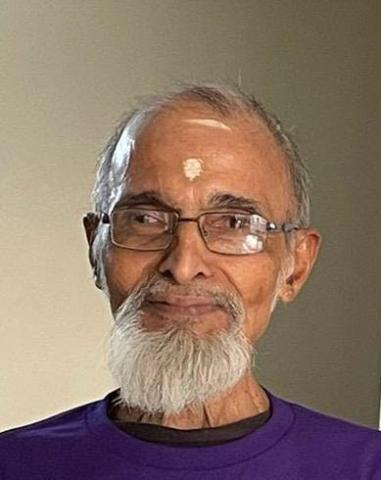
Dr. Thirumittakode Marath Krishnankutty Marar (Dr. T. M. K. Marar or Krishnan Marar as many knew him), a reputed space scientist, passed away on April 25, 2024, aged 85.
Between the initial heady days of India enthusiastically participating in all space activities using balloons, rockets, and satellites (like Bhaskara and Aryabhatta satellites) and the recently achieved maturity as demonstrated by the launch of AstroSat, Adiltya-L1, Chandrayaan missions and the Mars mission, there was a period of difficult times in the eighties and nineties when doing space science in India was extremely difficult. Krishnan Marar is that rare breed of a scientist who had the tenacity to get results against all odds, which sowed the seeds for the latter developments.
Krishnan Marar joined the Technical Physics Division (TPD) of ISRO Satellite Centre (now U.R. Rao Satellite Centre) in the late 1970s after his PhD and Humboldt Fellowship tenure in Germany. He completed his PhD thesis on ‘An Experimental Investigation of the Intensity and Energy of High Energy Cosmic Ray Electrons’ with Prof. D. J. Waddington as his adviser, from the University of Minnesota, USA. Many senior colleagues remember his connections with the IISc-ISRO cell, to which he contributed by formulating some of the plans. He headed TPD and was instrumental in its growth, from a team involved in assorted laboratory experiments to developing payloads for Indian satellites.
Initially,the Division was pursuing a variety of activities: the development of X-ray astronomy experiments to be flown on Indian sounding rockets, developing position sensing detectors using scintillators,in parallel with characterising acoustic emission signals for crack detection in structures, and conducting optical photometry of variable stars using ground-based telescopes. While all these experimental activities were happening, a proposal with TIFR for a future X-ray astronomy experiment on an Indian satellite was also completed. His connections with academic institutions and students were strong with his involvement and teaching under the Joint Astronomy Programme (JAP), summer schools etc.
The major step towards his Division’s involvement in space astronomy came with the development of the Gamma Ray burst experiment for the SROSS satellites with a tight mass power requirement. One of Dr. Marar’s happiest moments in life was the detection of a genuine GRB signal using SROSS-C2, corroborated by international satellites. The proposal for the Indian X-ray astronomy Experiment (IXAE) with TIFR was also realised on the IRS-P3 satellite.
Dr. Marar was a humble, persevering scientist who could always keep his perturbations internal without any outward display. He was very particular about accuracy in publications, often referring to himself as ‘Doubting Thomas’. The other aspect he was particularly concerned about was ethics, being just, science being the only motivation and never one to take credit without a contribution.
Very friendly, soft-spoken, with a subtle sense of humor and often introspective, he had the excellent capability to listen and react only after he had deeply thought about any detail which needed action. He felt greatly honored to be connected with scientists of repute at ISRO and collaborating institutes like TIFR, RRI and IIA. In turn, he would let his colleagues pursue their careers independently. At the same time, he never lost a chance to appreciate and acknowledge any contribution or ingenious solution from them, whatever their position in the institution.
Dr Krishan Marar is survived by his wife, two children, and their families. His work on space astronomy is transformative and sowed the seeds for later developments like the AstroSat satellite. He will be greatly missed.
- Dr. S. Seetha and Dr. A. R. Rao
